Your Cart is Empty
Gent Sets
Ties
New & Featured
Weddings
Matching Men's Pocket Squares With Neckties
June 11, 2020 7 min read

No matter how you may feel about it, your appearance says a lot about you. Whether you like it or not, you'll be judged on how you look, whether it's professionally or casually.
There are times where you'll need to look both stylish and refined, say for example like at a job interview.
Knowing had to add accessories like a pocket square to your interview outfit will help you stand out from other applicants, 9 times out of 10.
Fortunately, men's pocket squares are the perfect addition that can complete an outfit.
When it comes to incorporating color, though, not everyone knows how to go about it.
Not sure where to start? Don't worry, we've got you covered.
Let's take a look at everything you need to know about matching your pocket square with your necktie.
Overview
1. Consider the occasion: The first thing you should consider when matching a pocket square with a tie is the occasion. Is it a formal or informal event? The pocket square and tie you choose should be appropriate for the occasion.
2. Choose a dominant color: Look at your tie and choose the dominant color. This will be the color you will want to match your pocket square with.
3. Choose a complementary color: Once you have identified the dominant color of your tie, choose a complementary color for your pocket square. A complementary color is a color that is opposite the dominant color on the color wheel. For example, if your tie is navy blue, a complementary color for your pocket square could be orange or light blue.
4. Consider patterns: If your tie has a pattern, choose a pocket square that has a different pattern or no pattern at all. This will help balance the look of your outfit.
5. Fold your pocket square: There are many different ways to fold a pocket square. Some popular ways include the puff fold, the triangle fold, and the one-point fold. Choose a fold that complements the style of your tie and the occasion.
6. Coordinate with your suit: Finally, make sure your pocket square and tie coordinate with the rest of your outfit, including your suit or jacket. The colors and patterns should work together to create a cohesive look.
Color Thoery
Before we get into the details of choosing a tie and a pocket square and how to match each other, we talk talk about color theory.
Color theory is the art of using and mixing colors to create visual effects.
For an in-depth understanding of color theory, check out our guide that goes into detail about the color wheel and how to create color combinations.
Nuetral color scheme
Let's talk about a few basic color schemes that go well together (influenced by color theory).
Neutral colors: These types of colors are shades that seem to have a muted look but have underlying color hues that make can be influenced by variables like lighting.
Example: Colors like Black, White, Beige, Nude, Grey, Cream would be categorized as neutral colors.
Monochromatic Color Scheme
Monochromatic scheme: This style isn't based off any specific color, rather it's based off creating a visual/outfit with 1 color, in one or more shades.
Example: An example of this could be an outfit with blue as the base, however you have different shades of blue; such as royal blue, navy blue, light blue, etc.
Adjacent Color Scheme
Adjacent scheme: This style is based off pairing colors that are next to or adjacent to each other on the color wheel.
Example: Pairing yellow and green together. Pairing red and orange together, pairing blue and green together.
Basic Color Combinations
Now that we've briefly discussed the color wheel, let's talk about some easy color combinations that work for matching your tie and pocket square (or really any type of fashion).
Pair white with anything: This is a simple yet very effective way to pair a tie and pocket square. More times than not, having a white pocket square is very advantageous because it can be paired with anything.
Pair vibrant colors with muted colors: Contrasting colors is a great way to create outfits that pop yet aren't too vibrant nor dull. Pair a color neutral color tie or pocket square (i.e. beige) with a vibrant tie or pocket square (i.e. rust)
Pair multiple shades of blue together: I would recommend using a more muted blue as the base for the outfit, with more vibrant and distinctive colors being used as compliments. However, please note that this is just a recommendation and that you're free to do whatever you feel; as fashion is an expression of yourself.
Start with the tie
Alright! It's time to start picking the tie and pocket square.
Before we choose the pocket square, let's start with picking your tie; since it contributes more to the overall outfit.
Not sure how to choose your tie? Check out our ultimate tie guide for a detailed approach to choosing the best tie for you.
Quick tips to choose a tie:
Start by choosing your shirt color and suit color first.
- This will be the foundation of your look; so choosing these two first will help guide you in choosing your tie and pocket square.
Consider picking a tie width that matches the suit you're wearing.
- Wearing skinny ties with suit jackets that have large lapels may look unproportioned.
- Wearing traditional ties with suit jackets that have slim lapels would also look unproportioned.
Take into consideration the occasion.
- Formal event like a interview : Choose a more traditional style tie, (i.e. solid ties, striped ties)
- Informal event like happy hour: Choose a tie that express who you are (i.e. polka dot, paisley ties)
- Celebration events like weddings: Choose festive ties (i.e. floral, abstract ties)
After you've taken into account all the topics that we've touched based on above (i.e. color theory, suits, shirts, tie widths), it's time to move on to the pocket squares.
Your tie is meant to complement your outfit, your pocket square should complement your tie.
This means you should place a higher emphasis on what the two look like when placed next to each other as opposed to how your pocket square looks against your jacket.
This will serve as a great starting point and help you eliminate a large handful of choices that are no longer relevant.
Your pocket square should compliment your tie not match it
Based off current fashion insights, one of the biggest fashion faux pas that men make when adding pocket squares to their outfit is perfectly matching their tie and pocket square.
At first, this may seem like a good thing— after all, the colors are identical, how could it be wrong?
The thought process is that it gives off too much of a 'uniform' appearance, making the tie and pocket square look like they belong as a pair.
Additionally, this will prove to be visually distracting due to the overabundance of the same color.
However, we don't believe in that. We simply believe that you should wear whatever expresses your true self.
Besides, if people can wear socks and sandals together or mix different prints together, you can wear matching ties and pocket squares.
So, your tie's color or pattern should complement that of your tie instead.
This will ensure that your outfit 'flows' more naturally and make it as visually appealing as possible.
Neutral colors are always in style
It can be difficult to find the ideal color to match with your tie. Since color is often used as a display of personality, many people spend significant time searching for the colors that represent them best.
Sometimes, though, the outfit and tie combination doesn't leave much room for a colored pocket square.
In fact, choosing a color that's too 'loud' or one that doesn't mesh well with the rest of your outfit can throw off your whole appearance.
Instead, consider neutral colors when you're finding it difficult to choose one. Colors like black, white, beige, and brown will pair well with a tie of any color.
If you do choose to use more vibrant colors, though, choosing a more 'muted' tone will give off a more sophisticated appearance.

Find the ideal size pocket square
One of the worst mistakes you can make is choosing a pocket square that's too large or too small.
If your square is too big, it'll likely protrude too far out of your jacket's pocket and serve as a visual distraction.
Similarly, a pocket square that's too small can be hardly noticeable if it sinks down into your pocket.
Working With Patterns
Patterns are often complicated for most men to choose from. To the untrained eye, it can even seem nearly impossible to tell if a certain pocket square pattern goes well with your tie.
One of the easiest workarounds, though, is to choose a pattern for only your tie or pocket square.
For instance, if your tie is solid burgundy, you have a bit of flexibility when it comes to pocket square pattern.
Although incorporating patterns for both is more difficult, it's always a possibility.
Here are few tips to help working with patterns.
The pattern proportions of your tie and pocket square should vary. This means a tie with small, thin stripes is best complemented by a pocket square with larger, bolder lines.
The same can be said for dots, other shapes, etc.
If you're currently not at a point where you're confident wearing patterns, a simple pattern paired with a solid tie is often the best option.
Pocket Square Textures
A commonly-overlooked attribute of pocket squares is the texture. Although it's alright for the fabric of your pocket square and your tie to match, it's recommended that you don't choose a pocket square material that matches your suit jacket.
Since pocket squares are meant to add a bit of extra personalization and contrast to an outfit, having them blend in with your jacket material defeats the entire purpose.
So, as long as your pocket square contrasts with the material you're wearing, you shouldn't encounter any issues.
When looking to personalize your appearance, though, it's best to go with something like silk if you're looking to appear more refined.
Otherwise, textures can be used for a more casual look.
It's worth noting, though, that the ruggedness of a textured pocket square provides a nice contrast to a 'dressier' outfit and tie.
Matching Men's Pocket squares with ties can seem difficult
But it doesn't have to be.
With the above information about matching neckties and men's pocket squares in mind, you'll be well on your way toward achieving a refined, fashionable look.
Want to learn more about how we can help? Feel free to get in touch with us today to see what we can do.
Leave a comment
Subscribe
Sign up to get the latest on sales, new releases and more …












